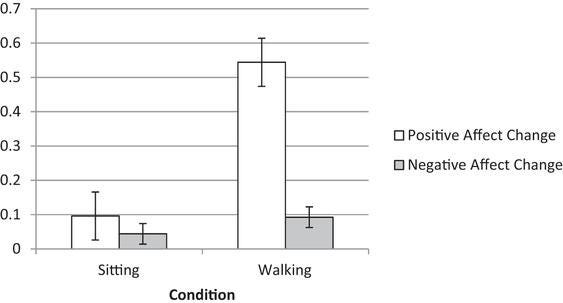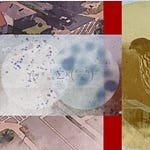Hello Interactors,
We’re coming up on spring in the northern hemisphere so this post eases us in to cartography — via the brain.
Cognitive maps play an integral role in our ability to interact with place. We don’t even give it much thought, but our brains are amazing cartographers.
As interactors, you’re special individuals self-selected to be a part of an evolutionary journey. You’re also members of an attentive community so I welcome your participation.
Please leave your comments below or feel free to email me directly.
Now let’s go…
LOCK DOWN. WALK ON.
It was a year ago this month that I started walking. A lot. For me anyway. Last summer I’d walk four or so miles every other day and up to 17 miles on the weekend. I would pull out my phone, launch Google Maps, and look for a patch of green within the city limits of my town, Kirkland, Washington. I would then set out to visit it by foot.
I’ve lived in Kirkland for nearly three decades. Only in this last year do I feel like I really know it. For thirty years I’d wake up, eat breakfast, jump in my car, and commute 6.5 miles to Microsoft. Yes, I’d sometimes bike or bus and I’ve run and biked around Kirkland many times. But, honestly, I haven’t really lived in Kirkland, I’ve mostly just slept here. If anything, I’ve mostly lived on its roads.
It’s a common pattern in America. Climb in a car and hit the road on your daily commute. The lockdown has disrupted that routine for those of us fortunate enough to work from home. Many, including me, don’t miss the commute. But others, I’ve heard, miss having the alone time that comes with the Single-Occupancy Vehicle. Zooming has taken on new meaning these days, but there’s something satisfying about zooming along alone in your thoughts in a climate controlled capsule caressing the concrete. I think we’ve probably all experienced those moments when you realize you have no recollection of the last mile or so of driving. We are literally lost in our thoughts.
But you’re taking it all in whether you know it or not. Your brain does not like being lost, so it makes sure your eyes are capturing images of your surroundings. It uses those images to build a map in your brain – a cognitive map. The commuter’s cognitive map is special map based on the path of your commute. Each successive trip further imprints those images into your brain while filling gaps in between. It’s building a coherent collection of ordered memories. Unknowingly, the brain stores a collection of anchor-points that are reliably recalled should the need arise to alter your interaction with place.
TURN LEFT AT THE WATERTOWER
In 1969, MIT Urban Design professor and practitioner, Stephen Carr and Northeastern University Psychology professor, Dale Schissler, conducted an experiment to better understand how we build up impressions of a place. They started by interviewing commuters in the Boston area, including passengers. They had them relive their journeys and recorded environmental cues they recalled. For example, a sign, a building, or a tree. The next day they strapped a camera to their head with an optical device pointing at the cornea of their eye. They wanted to see exactly what the commuters saw and where exactly they were looking. I’m not sure what it was like strapping a 1960’s era camera to the head, but it probably looked like this Evans and Sutherland virtual reality contraption from 1960:
While on their journey, commuters where prompted to verbally describe landmarks that were recorded by the researchers. Days later, they showed the commuters the images they observed along with film footage from the trip and had them again identify landmarks on their journey. The researchers tallied which images were recalled by each set of commuters and determined these as meaningful landmarks. What they found is the number of meaningful landmarks varied among those new to the area, routine commuters, and passengers.
The average driver, including those new to the area, recalled 10 objects over a four mile section of the trip. Passengers recalled 21. And routine commuters were able to recall 28. But there was one thing they all had in common. They remembered similar images and in the same order. Routine commuters were adding more detail and filling in gaps, but appeared to be using the same anchor-points as a drivers new to the area.

This is a significant finding. It suggests our brain is reliable at building a cognitive map made of anchor-points – even if the path is unfamiliar to us. We use these anchor-points as orientation should we need to recall them at a later time. It also demonstrates our ability to learn and modify our path and our image of a city over time.
IT’S IN THE BRAIN
Nearly a decade later, in 1978, neuroscientist John O’Keefe had a similar curiosity of cognitive maps. Instead of tracking and measuring the mechanics of the eye, he probed and measured the cellular activity of the brain. By implanting microelectrodes into the hippocampus region of a lab rat’s brain, he was able to record electrical signals emitted from their brain cells as they navigated a maze in search of food.
These cells were mostly inactive until the rat happened upon a particular place. A cell would fire and continue firing until it left this region. O’Keefe then implanted other electrodes into other cells and discovered some would come to life when others fell dormant. He discovered three classes of cells that harmonize with one another in assisting the rats through the maze:
Cells for location in space: where in the environment the mouse was.
Cells for orientation: which direction the mouse was facing.
Cells for distance: the distance between anchor-points.
This trio of harmonized cellular electricity embedded in the center of the brain is another way of describing a cognitive map. O’Keefe won a Nobel Prize for his discovery.
The field of neuroscience continued on O’Keefe’s path. Now equipped with brain imaging capabilities, scientists have gone on to visualize these phenomena in real-time. And what they have discovered are many more classes of engaged cells than just the three O’Keefe identified. It’s not a trio after all. It’s a symphony. And it’s not residing just inside the hippocampus, but throughout the brain. As enamored we are with our phones with gyroscopes and GPS, they’re nothing compared to an animal’s navigational system. Shane O’Mara is a neuroscientist currently doing experimental brain research at Trinity College Dublin. He notes,
“…there are many other cell types contributing to our sense of space. Place cells signal where you are; head direction cells signal where you are heading; the boundary cells…tell you about the edges of the environment; and grid cells provide a metric for space. In addition to the core GPS system, there are other cells that signal distance to objects, speed of the head and body movement, and your relative upright position. So our picture of our brain is becoming much more complex.”
But another discovery O’Keefe made with his food seeking anesthetized maze rats, is that their cellular GPS had a far weaker signal when the rat was pulled through the maze on a trolley. What I realize now is that after nearly three decades of commuting, my brain has an over-developed path-based cognitive map of a 13 mile round trip commute from home to work and back. In fact, my cognitive map of the entire region is comprised of paths derived from a drive through a road network as I sat silently in a seat speeding down the street.
It turns out walking and cognitive mapping are mutually dependent systems that are only optimized when done together. Driving or riding as a passenger are poor substitutes for enhancing our interactions with place. In the words of Shane O’Mara,
“The brain’s navigational and mapping and memory systems are so intertwined as to be almost one and the same. Walking to somewhere depends on the brain’s navigational system, and in turn walking provides a vast amount of ongoing information to the brain’s mapping and navigation systems. These are mutually enriching and reinforcing systems.”
This explains why walking around Kirkland over the last year has introduced me to a city I’ve known for nearly 30 years. And walking has not only enriched my cognitive map, it’s enriched the love of my environment and my own emotional well-being. Walking makes us happy.
WALK AND WHISTLE
In a 2016 study out of Iowa State University (Go Cyclones), researchers Jeffrey Conrath Miller and Zlatan Krizan demonstrated walking yields happiness in a simple study of college students. They presented one set of students pictures of buildings on campus while seated indoors in a lab. They asked them to describe the aesthetic qualities of the buildings in the pictures and also their emotion state at the time. They then asked another set of students to walk around campus in search of those same buildings and had them record their aesthetic impressions and self-reported feelings. What they found is represented in the title of their paper: “Walking facilitates positive affect”, and their second discovery is offered in parenthesis, “(even when expecting the opposite).” It turns out that even those students who dreaded the thought of walking around campus self-reported being happier having done it.


This is a limited study with a small sample size, but longer range studies with significant populations have demonstrated positive mental health effects from walking. A 2017 study by public health researchers out of Australia tracked nearly 34,000 people over eleven years. They wanted to know what effects exercise has on preventing depression, how much intensity is required to have an effect, and what causes the effects. They found that just one hour a week of walking could prevent 12% of cases of onset depression by otherwise healthy adults. Imagine what walking an hour a day would do.
COVID has drawn many people out of their house to walk. There hasn’t been much else to do. Some of these people may have even dreaded it. It’s possible this is one positive outcome of this pandemic. As frustrating as the lockdown has been, perhaps walking has prevented a sizable number of people from succumbing to sedentary induced depression.
Our cities don’t make it easy to walk. A century of car culture has kept people from interacting with place. We can deduce from the research I’ve cited, that this is a bad thing. Not only do we have a biased and hazy image built in our minds of the environment in which we live, sitting in a car or a chair does not facilitate happy thoughts.
We all succumb to what those Iowa State researchers referred to as the ‘dread effect’. It’s all too easy to tap that green square on Google maps, hit the ‘walking distance’ tab, shutter at the time and effort it would take to walk, and then grab the keys and drive there. But for the last year, I instead grabbed my headphones, took a step, and felt the cells in my brains come alive. I am interacting with place, with a smile on my face, as a cranial cellular symphony traces a map of the space.
References:
Shane O’Mara. In Praise of Walking
Reginald G. Golledge;Robert J. Stimson. Spatial Behavior: A Geographic Perspective
















Share this post